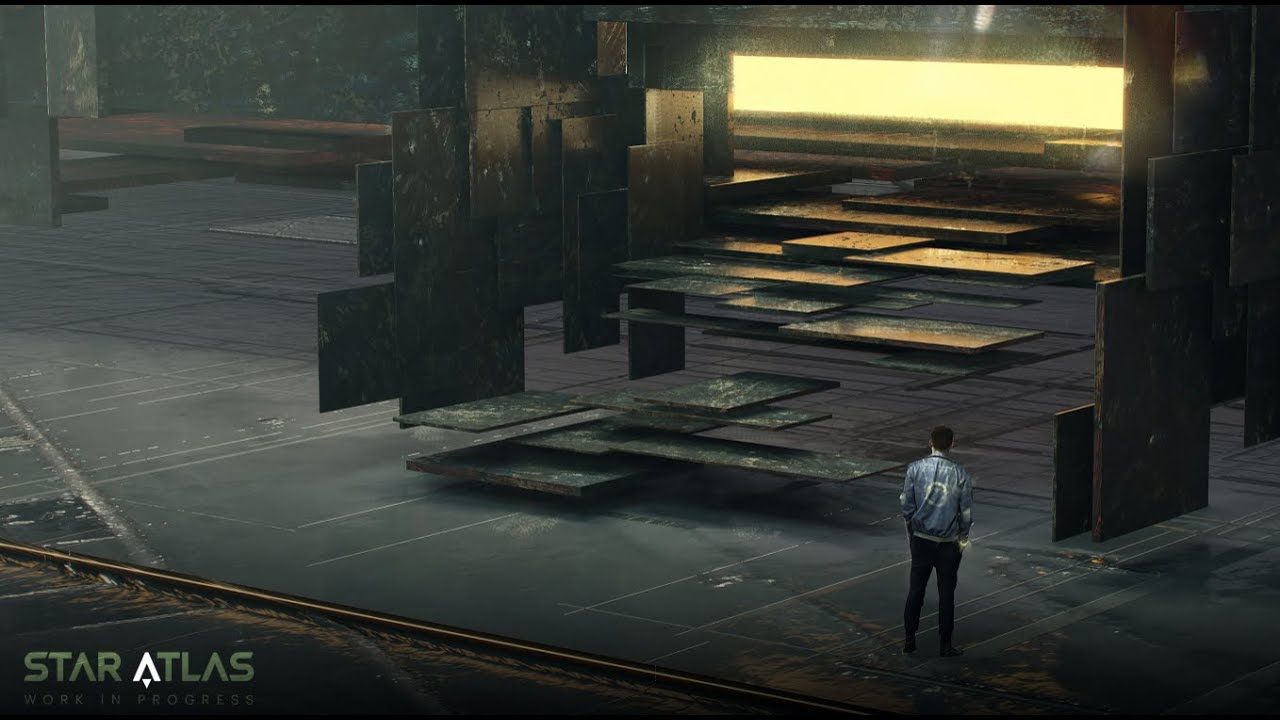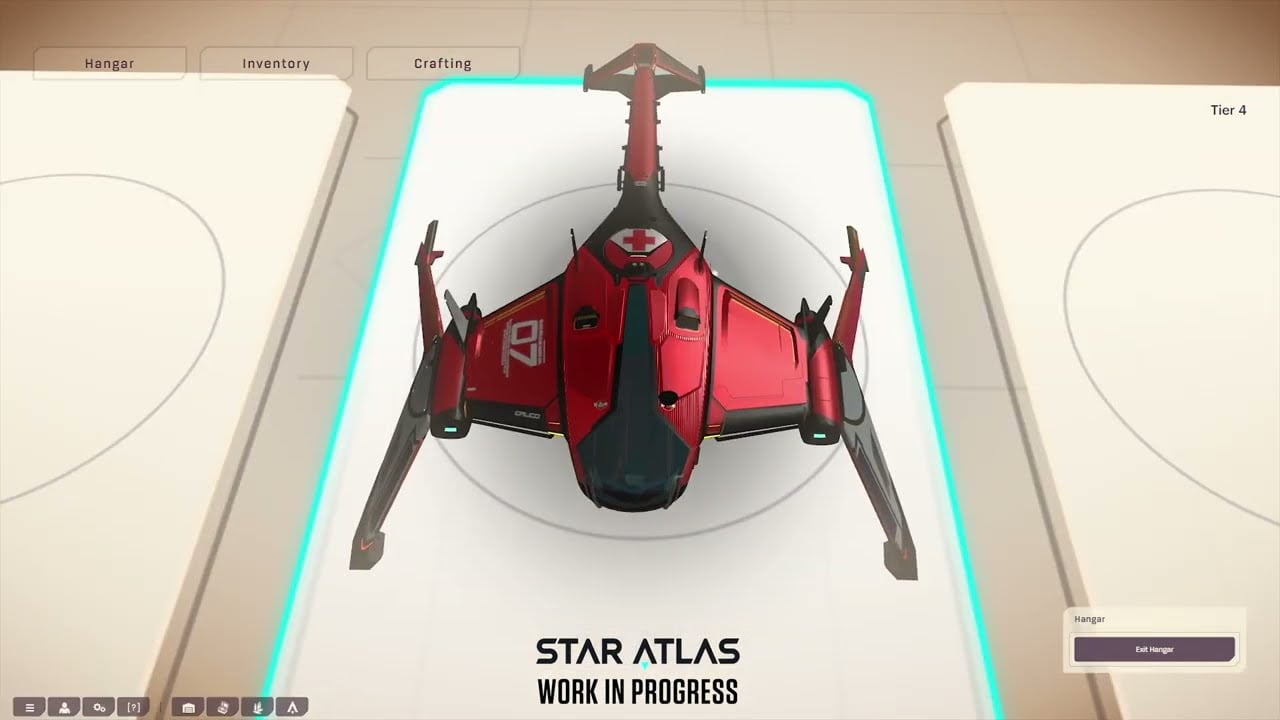Reviewing Star Atlas Small Fighters: Way-Too-Early Power Rankings
Of the ships released on the Galactic Marketplace so far, no other class/role combination matches the variety of the Small fighters, with six options to choose from at the time of writing. Two more entries, from VZUS and Opal, will be released later on in GAO 2. These ships represent a significant investment, and will be a common starting point for players eager to fight for their faction on the front lines of conflict zones in SCREAM. To help players and DACs choose the right fighter for them, this article will provide an in-depth breakdown of each Small fighter, evaluating their strengths, weaknesses, and best-fit playstyle. I’ll also rank them from worst (most likely to underperform VWAP) to best (most likely to overperform).
Disclaimer: These rankings are highly subjective, created in advance of any gameplay or detailed combat statistics, and should not be taken as facts or investment advice. Ship performance will be affected by upgrades, crew level, player skill, and other factors. Some of the details considered here may not be factors in SCREAM at all. Without further ado, let’s get into it.

#6: Ogrika Mik
An interesting contrast to the overwhelming firepower of the Thripid, Ogrika’s Large-class fighter, the Ogrika Mik has the lightest armor and armaments of the Small fighters. Correspondingly, it has the lowest origination price, 710 USDC. Even for the lower price, it’s hard to see what advantages (if any) the Mik has over other Small fighters. The X-Small missile bay will substantially reduce the burst damage capabilities of the Mik, and 3 Small weapon hardpoints put its sustained damage rate at the bottom of its class. Meanwhile, X-Small countermeasure bay and hull reinforcement slots leave the Mik highly vulnerable to the weapons of Small or larger combat vessels.
The only potential advantage this captain can see is the Mik’s smaller size and lower mass. A Small engine and maneuvering thruster pushing an X-Small hull should be able to generate more acceleration, thanks to Newton’s second law of motion. That, combined with a smaller hitbox, might be just enough to counteract the Mik’s weaker defenses in the hands of a skilled pilot. This should prove especially true in combat against XS and XXS ships, because their lack of missile bays makes the Mik’s X-Small countermeasure bay a non-factor. The Mik also packs extra fuel and ammunition stores, helping sustain longer patrols.
Best-Fit Playstyle: light skirmisher, hunting XS and XXS craft

#5: Pearce X6
I can already hear the comments: “How can you rank the PX6 so poorly? It says ‘best-in-class weaponry’ right there in the catalog!” Well, let this be a lesson about truth in advertising, and an opportunity to discuss the important concept of damage curves. First, let’s talk about what the X6 gets right. It has three modules: extra ammunition stores, a brig large enough for a single captive to bring in bounties, and a mess hall to improve the comfort of its two-person crew. For armaments, it has four Small weapon hardpoints, four X-Small weapon hardpoints, and a Small missile bay. No doubt about it, the X6 has the most raw firepower of any Small fighter released thus far.
However, to bring all of its guns into action, the X6 needs to get into the range of X-Small guns, likely to be shorter than that of Small guns. Think of a battleship: the main battery can hit targets from miles away, but the smaller secondary guns need to be much closer. At the range of typical Small weapons, the X6 is no better-armed than a Busan Thrill of Life or a Rainbow Chi. In other words, its damage curve (damage per second plotted against distance from target) is merely average for the Small class until it reaches close range. Unlike other Small fighters, the X6 lacks any outstanding maneuverability, stealth, or defensive capabilities, leaving it vulnerable to counterattack while working its way into close range. If you truly believe the best defense is a good offense, the X6 is the fighter for you. I personally suspect it will prove inferior to the more balanced offerings in its class.
Best-fit playstyle: Frontline gunship, bounty hunter

#4: Tufa Feist
Next we have the Tufa Feist, a unique, stealthy ambush predator made of mutagenic stone, near-invisible when hiding in an asteroid field. In addition to its living stone camouflage, the Feist has a number of other quirks that make it exceptionally well-suited to its role. It has a Medium-sized impulse engine, and two Small-sized maneuvering thrusters where most ships have only one. This combination of an oversized engine with extra thrusters should enable the Feist to pursue targets at blazing speeds while safely navigating asteroid and debris fields. When dogfighting in such a cramped and hazardous environment, there is probably no Small fighter capable of standing up to the Feist, despite the ship’s lack of overwhelming firepower. For lengthy stays at ambush sites, the Feist also has a Small-sized mess hall to keep the crew supplied with fresh food.
Despite its unique strengths, the Feist has some noteworthy limitations, too. First and foremost, the Tufa Feist has an X-Small warp drive, limiting its strategic mobility. Although this is not such an issue for serving in a point defense role, it does reduce the Feist’s ability to perform other mission types. 3 Small weapon hardpoints and a Small missile bay put this ship ahead of only the Ogrika Mik in terms of weaponry. The Feist also sacrifices its tractor beam for an X-small version, although it’s hard to say how this will affect the ship’s utility. Perhaps the Feist will struggle to gather resources and salvage beyond a certain size.
Regardless of the sacrifices made, the Feist is supremely optimized for its intended role. The only reason it’s not ranked more highly is that its role is so specialized. Early on in SCREAM, there will be vast expanses of uncolonized space, potentially making it difficult to predict where and when opposing factions will pass through. It’s also unclear how well the Feist’s stealth features will perform outside of asteroid and debris fields, which can always be avoided by cautious pilots. Still, there’s no better way to secure a mineral-rich asteroid find than a few well-placed Tufa Feists.
Best-fit playstyle: point defense, ambush

#3: Busan Thrill of Life
The Busan Thrill of Life, commonly abbreviated as BTOL, is a well-balanced stealth fighter showcasing the elegant design and sophisticated technology of the Sogmian race. Made famous by Lt. Wenn, the BTOL is the likely ship of choice for players venturing deep into hostile and unknown territories. With 4 Small weapon hardpoints and a Small missile bay, the armaments are decidedly average for its class. The rest of the components are also typical of Small fighters in both size and number. This leads one to believe the BTOL is generally well-rounded, perhaps conducive to further customization. Indeed, Lt. Wenn’s own questionable modifications were alluded to in recent lore transmissions.
Compared to the Tufa Feist, I give the BTOL a higher ranking because although it too specializes in stealth, the BTOL does so without making significant sacrifices to other areas. It has typical guns, warp drive, and other features for its class, and has stealth features that should work as well in open space as they do in an asteroid field. Therefore, while not quite as effective as the Feist in its preferred terrain, the BTOL should be able to take on a much more diverse set of missions, leading to more lucrative earning opportunities for operators. Like the Feist, the BTOL has a Small mess hall, while also packing extra ammunition storage for long-haul operations deep in hostile territory.
Best-fit playstyle: reconnaissance and special operations

#2: Rainbow Chi
Now we’re approaching the top of the heap, and second place in my book goes to the beautiful, quicksilver Rainbow Chi. Beyond its gorgeous exterior, the Chi has a few remarkable features that set it above the rest of its class. The Chi sports a Medium-sized hull reinforcement, impulse engine, and warp drive, without any undersized components to be found in the stock configuration. The Medium warp drive gives it best-in-class strategic mobility, able to cross from one sector to the next faster than any other Small fighter. A Medium impulse engine gives it superior maneuverability at the tactical and operational level, outpacing most other Small ships when traveling at sublight speeds. The oversized hull reinforcement adds durability for staying power in decisive combat engagements, supported by Small-sized fuel and ammunition modules to further extend its endurance. This configuration puts one in mind of the long-range, heavy fighters that escorted bombers in Earth’s Second World War, such as the Lockheed P-38 Lightning.
It’s hard to identify any weaknesses on the Chi. The armaments, 4 Small weapons and a Small missile bay, are typical for its class and role, but not outstanding. The Chi also has only one pilot, leaving its sole operator with a lot of responsibilities on the long-range missions for which it seems to be designed. Despite these minor flaws, the Rainbow Chi can do things no other Small fighter can, and survive hits that would destroy any of its peers, justifying its ranking near the top. In addition to long-range escort and patrol missions, I foresee Chi squadrons as the best-in-class option for a quick-reaction force (QRF) role, using oversized warp drives and engines to rapidly respond to threats anywhere in a given sector. In dogfights, the extra maneuverability and hull strength should more than compensate for its average armaments.
Best-fit playstyle: long-range, strategic heavy fighter

1: Fimbul BYOS Earp
Are you surprised this ugly, snub-nosed little beastie made it to #1? Yes, I am an Earp maxi, and here’s why. Although it’s the third-cheapest Small fighter by origination price, the Fimbul BYOS Earp has a number of powerful, unique features that make it competitive with every other ship in its class (if not flat-out better). First, we have to talk about the guns: no other Small ship released so far has Medium hardpoints, and the Earp has two of them. This brings us back to our discussion of damage curves: it seems highly likely that Medium guns will have significantly longer range than Small weapons, allowing the Earp to start dishing out damage before other Small fighters can hit back. It’s hard to say how the damage per second will compare between four Small guns versus two Medium guns, but the longer effective range of the Earp’s weaponry is likely to prove a significant advantage. Then you have a Medium impulse engine, putting the Earp’s sublight speeds at or near the top of its class. If you can’t outfight your opponent, you’d better be able to outrun them, and the Earp has both bases well-covered. You can even fry up some eggs in the X-Small mess hall. The whole thing reminds me of the earliest jet- and rocket-powered interceptor fighters of WW2, right down to the stubby shape, like the Messerschmitt Me 163 Komet.
The Earp’s best feature is also the easiest to overlook: it’s the only ship currently on the market with an oversized power supply. Many ships have oversized components, but with a typical power supply, that likely requires sacrifices to the power consumption of other subsystems. With a Medium-sized power supply, the Earp should be more than capable of driving its oversized guns and engines at full power during intense firefights, and supporting upgrades that increase the power requirements of its subsystems. When it’s time to shift maximum power to the engines, or the shields, or the guns, an oversized power supply should pay dividends. This does bring us to the only significant downside for Earp operators: the stock configuration includes no ammunition or fuel modules. Balanced against oversized weapons, power supply, and engines, the lack of extra fuel and ammo limits the Earp’s operational endurance. But hey, we’re here for a good time, not a long time.
About the Author: Hologram News Network
Star Atlas Discount

news via inbox
Get news from the Hologram first





